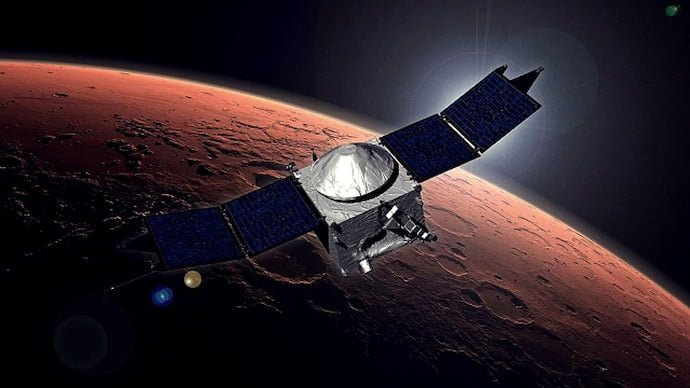Mangalyaan 2 also kwon as the Mars Lander Mission (MLM), was initially planned as India’s second Mars orbiter mission 2 (MoM 2) , following the success of Mangalyaan 1 (Mars Orbiter Mission 1) launched in November 2013. However, ISRO has now shifted its focus from an orbiter to a lander, making this India’s first attempt at a soft landing on the Red Planet.
The Mars Lander Mission (MLM) will include a rover and a rotorcraft (helicopter), weighing approximately 5 kg, designed to operate on the Martian surface. The mission is expected to launch around 2031.

Objective of Mangalyaan 2
Using indigenous scientific instruments, explore the characteristics of the surface, mineralogy, geomorphology, and atmosphere of the planet Mars.
In addition, the mission also conducted investigations of Mars’ moon Phobos and analyzed the orbits of small celestial bodies encountered during the journey from Earth to Mars.
Status of Mars Lander Mission
The Mars Lander Mission (MLM), or Mangalyaan 2, has been approved by the Space Commission and is currently awaiting approval from the Union Cabinet.
The payloads are as follows
(1) ARIS (Advanced Retarding Potential Analyser for Ionospheric Studies): It will measure the ion and electron energy distribution in atmosphere of the Mars. It consists of two independent sensors to measure simultaneously electron and ion flux. The objective of ARIS is to monitor whether of Mars. It is built by IIST (Indian Institute of Space Science and Technology) with the help of various centers of ISRO.
(2) Hyperspectral camera: It captures hyperspectral images across the electromagnetic spectrum and analyzes these images for finding objects, identifying materials from the spectrum of each pixel of an image scene.
(3) Panchromatic camera: A panchromatic camera captures images as they appear to the human eye, although with no colors. Almost like a black-and-white image.
(4) SAR (Synthetic Aperture Radar): SAR can penetrate clouds and darkness to produce high-resolution images of the surface of Mars. It means it can collect data in any weather.
(5) Mars Orbit Dust Experiments (MODEX): This payload will help to understand the origin, abundance, distribution, and flux at high altitudes
(6) Radio occultation instruments play a crucial role in capturing neutron and electron density profiles, enhancing our comprehension of the atmospheric traits of the Mars planet.
(7) The Langmuir Probe and Electric Field Experiments (LPEX) are like scientific detectives on Mars. They can measure things like how many electrons are in the air, how hot they are, and even the electric waves around them. By studying all of this, scientists can paint a detailed picture of Mars’ unique atmosphere and understand it better.
Some other important payloads will also be added in the future, once it is officially announced by ISRO.
Read also Aditya L1: India’s 1st mission to Sun
Read also Shukrayaan 1: India’s next mission to Venus
Challenges for Mangalyaan 2
(1) To escape Earth’s gravitational pull, a spacecraft needs to accelerate with sufficient speed, use the right trajectory for a distant destination, and then slow down adequately to enter orbit around the planet Mars. In simple terms, it’s like a carefully planned journey involving going faster at the beginning, navigating through space using proper angles, and finally slowing down when approaching Mars.
(2) The spacecraft needed to be capable of autonomous operation because it could take several minutes for communication signals to travel from the ground stations on Earth to the spacecraft. In simpler terms, the spacecraft had to be able to operate on its own because there could be a delay of a few minutes in communication with ground stations.
Currently, NASA’s Perseverance rover running on the surface of Mars, and a mini helicopter Ingenuity is flying on Mars.
Read also Chandrayaan 3:Contribution of private companies to the mission
What is the launch date of Mangalyaan 2
Mangalyaan is expected to launch around 2031.

